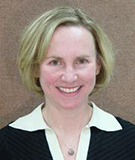Wall Street seeks a valuable resource from Washington state’s aging farmers: their water
adrianaThe faces behind Washington’s farms are wrinkling.
The average age of a Washington farmer is 58.1 years, up from 56.8 in 2012, according to the Census of Agriculture. Meanwhile, farmers under age 44 make up less than 18 percent of those in the business.

The years ahead will be defined by “high transition,” said Marcia Ostrom, an associate professor in the School of the Environment at Washington State University.
That represents an opportunity for investors in farms, land and water.
Older farmers often don’t have relatives interested in farming, Ostrom said. Their retirements are often tied to farm assets. Younger farmers often find it difficult to build capital to enter a high-cost industry.
Water rights offer farmers another option.



